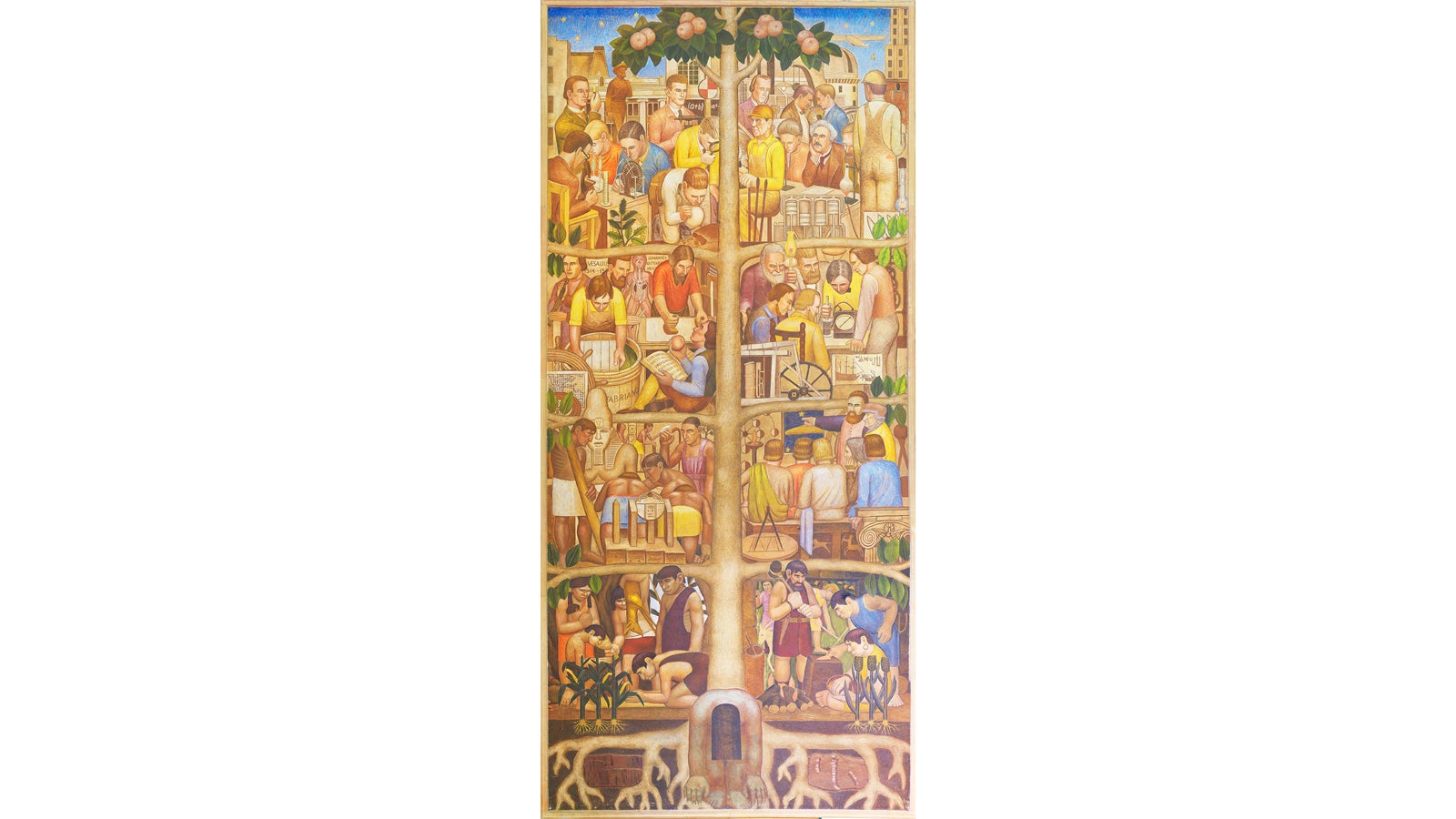University of Oregon covers racist murals in its library
(CNN) — The University of Oregon is covering the controversial murals that have decorated the halls of its largest library after years of protest over the murals’ racist language and portrayal of Indigenous people.
The university made the announcement Wednesday, saying the move was in part an acknowledgment of the larger conversations occurring about racism in the US.
“In a move to acknowledge conversations about anti-racism taking place around the world amid the Black Lives Matter movement, the University of Oregon has ordered four murals in the Knight Library that contain racist, exclusionary language and imagery to be covered,” a statement from the school reads.
These four murals date to the Knight Library’s construction back in 1937. Because the murals are affixed to the walls, the university said they cannot be removed without risking damage to the building — hence why they are being covered up instead.
“This is something that is long overdue,” said Patrick Phillips, the university’s provost and senior vice president, in a statement. “This is a historic time in our country, and we need to listen to members of our community who have felt the hurt and sting of racism on our campus.”
The three most controversial murals are: “The Mission of a University,” “Development of the Arts,” and “Development of the Sciences.”
The “Mission of a University” mural refers to the “conservation and betterment” of the school’s “racial heritage,” a reference to White people. The text of the mural is taken from a 1909 speech given by a sociology professor at the university, Frederick George Young.
The two others, “Development of the Arts” and “Development of the Sciences,” both depict examples of seemingly Indigenous peoples at the bottom, using less-advanced tools and equipment, while the White scholars and colonizers at the top are shown using more advanced equipment while doing their work. The two “Development” murals clearly draw a parallel between the “primitive” Indigenous folks and the “superior” White settlers.
And though the murals are now set to be covered, the push to have them removed has been a long one. The “Mission of a University” mural has been vandalized multiple times, as recently as June 2020.
“I am firmly against the destruction or censoring of art in any form, but it would be disingenuous for anyone to say that these pieces, especially in a library whose central mission is to welcome and support the entire campus, are ‘just art,’” Phillips said. “They represent much more and it is incumbent upon us to address that fact.”
The murals are set to be covered by Oct. 1. And for some students at the University, that day can’t come soon enough.
Temerity Bauer, a student and co-chair of the university’s Native American Student Union, said in the university’s statement that she used the library reguarly and the murals shocked her.
“How are we going to be successful and confident in an environment like that?” she told the school.
A 2017 petition to remove the “Mission” mural expressed similar sentiments.
“Upon reading this mural, I immediately felt unwelcome and disconnected from a sense of fellowship and safety in the space meant for learning,” the petition states, garnering more than 1,000 signatures.
Mark Watson, interim dean of the university’s libraries, said in the statement it was time for the university to act.
“These murals have been controversial as long as I’ve worked in the library, and that’s over 30 years,” Watson said.
The University of Oregon isn’t the only school experiencing a reckoning with its racist past.
Just this summer, numerous students and alumni — including two NFL stars — have called on Clemson University to sever its ties with John C. Calhoun, the slave-owning former US vice president whose plantation became its campus.
And even before this year’s mass protests, schools like the University of North Carolina at Chapel Hill had its own reckoning regarding a Confederate statue on its campus.



